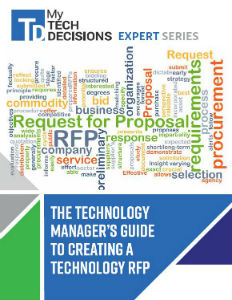When you think of control and automation in business, tasks come to mind that are completed without requiring specific thought or intervention. When a business is automated, it runs routinely and predictably. An automated business is a measure of success, which allows the owner to focus on visionary goals without getting drawn into the day-to-day operation.
Businesses that are automated are more scalable and poised for growth, and therefore have greater value than those that are not. Non-automated businesses typically lack the efficient and well-documented systems that lead to a consistent outcome. Without automation, more manual involvement is required whether it is to manufacture a product, service a customer, or manage internal needs.
Applying the idea of control and automation to AV systems presents two distinct interpretations. One is to automate the process of specifying, designing, building, programming, installing, and commissioning AV systems. Automating these processes creates efficiency and profitability, saves time, and lowers costs.
One example of automating systems is the use of the configured approach to control systems, as opposed to programming control systems. The configured approach can be advantageous as it allows for control system functionality that is streamlined and simplified. Systems are not being looked at as customized, one-off products, but rather as an easily reproducible model that provides a consistent outcome. Ironically, the greater the requirements for automated functionality, the more likely programming, rather than configuration, will be required.
Control and Automation and the User Experience
This takes us to the concept of automation with regard to the functionality of the system and the user experience. If the functionality of an AV system includes a lot of automation, it means that it is less dependent on user interaction and works on its own without the need for thinking or other human variables.
A typical example of a fully automated system is one in which the lights turn on when someone enters a conference room. When a laptop is connected, the display powers on and shows the screen image, the audio is set to a preset level, and a meeting can begin without any user action. When the meeting is concluded, the laptop is disconnected and the room is vacated, the display powers off and the lights dim after a defined elapsed time of inactivity.
In this basic case, there is no user interface for interacting with the system. Everything is automated, making operation consistent and easy without the need for variation or manual operation. This may or may not be desirable for the user or the technology manager supporting the system. Although automation satisfies the need for ease of use and does not require technical understanding, it limits flexibility.
Automation vs. Control
Automation, by definition, is the way in which devices, systems, sensors, and users interact to perform scripted operation resulting in the ease of operation and smarter performance for users. It is notably different from the term “control” in that it provides a series of conditional steps to achieve an outcome rather than single direction operation of functions.
Control describes the manual operation of device functions on a one-to-one basis, which is the opposite of automated. Automation scrips are based on rules that are established by the specifier or programmer of the system presumably based on the needs and desires of the user.

This new guide will show you how to structure your RFP so you get the maximum return on investment for your budget.
The Technology Manager's Guide to Creating a Technology RFP.Automation provides a sense of intelligence to the system, but it should not be confused with AI (artificial intelligence). Automation is a predefined operation that may or may not be suited for all situations or users’ needs. There may be cases when automation needs to be overridden based on special scenarios or particular needs. For example, in the previous scenario, what if the user connected their laptop, but they were not ready to share their screen with everyone in the room? They would not have a choice; automated functionality cannot be overridden.
A word of caution is that over-automation can be detrimental to the usability of the system and frustrating to the user. For that reason, it is recommended that the ability to enable, disable, or adjust certain forms of operation be built into the system. These settings help to personalize the system operation, so that it can further enhance the user experience. It is also advisable to provide the option for manual control for instances where specific functions outside the realm of the day-to-day operation are required, or an adjustment is necessary to use the system in a different manner due to a service issue.
Specifying Automation
When specifying automation, like any type of AV control project, it is important to accurately identify and document the specific needs and expectations of the users, how they plan to operate the system, and how automation can enhance their experience. Automation can be subjective and requires a good fit with the users’ comfort level, organization’s culture, and needs of the support staff. It can vary based on situation or organization.
For example, in an educational setting, the requirements for automating the powering off and on of the system may be different than in a corporate environment. If a room is not scheduled in an educational setting, it is likely not to be used and can be powered down. In a corporate setting, there are more ad-hoc meetings that may go unscheduled. So, consideration must be given to not permit a system to power down automatically if a room is occupied or in use.
If you enjoyed this article and want to receive more valuable industry content like this, click here to sign up for our digital newsletters!










Leave a Reply